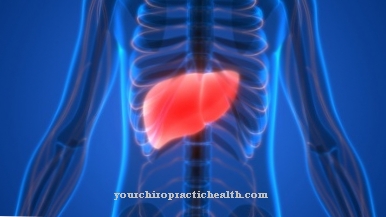With immunization is the specific development of immunity to a specific viral or bacterial pathogen. One differentiates between one active and one passive immunization. In the case of passive immunization, which is effective immediately, the body is supplied directly with antibodies against the antigens of a certain pathogen, while in active immunization the immune system must first build up the antibodies through direct contact with inactivated pathogens.
What is immunization?

Immunization includes the expanded ability of the immune system to effectively fight a defined viral pathogen type, in a few cases also a bacterial pathogen. An existing infection can be overcome in this way or contact with the pathogen can no longer trigger the infectious disease, as there is a specific and individual immunity. It is always an acquired immunity that is achieved through active or passive immunization.
With active immunization, the body - and thus the immune system - is confronted with the pathogen and its antigen, which have previously been rendered harmless in a suitable manner. The immune system then (actively) develops a special antibody whose “recipe” is stored in the memory cells of the immune system (immunological memory). In the event of renewed contact with the specific pathogen, the immune system is able to synthesize antibodies in sufficient quantities within a very short time to kill the pathogen or render it harmless in some other way. Strictly speaking, accidental contact of the immune system with a specific pathogen that the immune system has overcome is also part of active immunization.
This is countered by passive immunization, with which an immediately effective protection is achieved as a prevention against infection or even an existing infection can be overcome. It includes the direct supply of the body with the necessary antibodies against the specific pathogen.
Function & task
The particular benefit of active immunization is that after contact with the inactivated pathogen or antigen, the immune system is given sufficient time to develop the specific antibody without the pathogen being able to win the "race". Active immunization, which is usually carried out in the form of a vaccination, has made it possible to contain many epidemics that previously killed thousands of people.
In some cases, it has been possible to temporarily control pathogens worldwide in such a way that no more cases of disease have occurred. However, it cannot be ruled out that locally limited populations of the pathogens in question exist in reservoirs without being conspicuous.
Because reactions of the immune system are included in active immunization and the immune system does not differentiate between contact with inactivated or infectious germs, the antibodies produced are stored in the "database" of the immune system in the form of memory cells, so that when they come back into contact with the same - this time activated - pathogens the antibodies can be synthesized very quickly and the disease cannot break out.
Since the initial production of the specific antibodies takes a certain time from several days to weeks, active immunization is usually not suitable for the treatment of an already existing acute infection. Rather, it serves to prevent certain pathogens, for example before traveling to the tropics or before planned trips to endemic areas.
Active immunization takes place either by ingesting the weakened live pathogens or by injecting “dead” pathogens or by carving into the skin (smallpox viruses).
In order to achieve an immediately effective defense against pathogens during the acute infection phase, the necessary antibodies, which have been isolated or produced elsewhere, can be injected directly. This has the advantage of immediate effect, but also with direct involvement of the immune system. This means that the antibodies are completely broken down again after some time and their existence is not stored in memory cells. If you come into contact with the pathogen again, the immune system cannot remember the effective antibodies. This means that no long-term protection can be built up through passive immunization.
In some cases, such as for the treatment of tetanus and rabies infections, a combination of passive and active immunization is possible (simultaneous vaccination).
You can find your medication here
➔ Medicines to strengthen the defense and immune systemIllnesses & ailments
Illnesses and ailments that can be associated with immunization are very rare. Accordingly, the risks associated with immunization are low. However, there are residual risks.
With active immunization by oral ingestion of the weakened pathogen (oral vaccination), there are basically two different basic risks. On the one hand, there is a low risk in the vaccinees that the hoped-for immune response to the germs does not materialize, as the person suffers from an acute diarrheal disease, which means that the germs cannot adhere to the intestinal epithelium and are excreted again unnoticed by the immune system.
Another - very low - risk exists for people in the vicinity of the person being vaccinated. They can become infected with the excreted live germs of the vaccinee if they come into contact with the germs and at the same time have an extremely weakened immune system.
Active needle vaccination carries the normal risks associated with any injection. This can lead to reactions such as fever, headache and body aches, similar to a mild flu.
Symptoms can also appear that would occur if infected with the vaccinated pathogen. The symptoms and course are, however, much weaker and usually harmless. In fact, the patient is slightly infected after vaccination.
Children and adults who suffer from an acquired or inherited immunodeficiency or who are artificially immunosuppressed may not be vaccinated. In addition, there may be redness and immune reactions at the injection site, which will disappear again. There are no known side effects of passive immunization beyond the normal risk of a reaction to the needle prick.
























.jpg)



